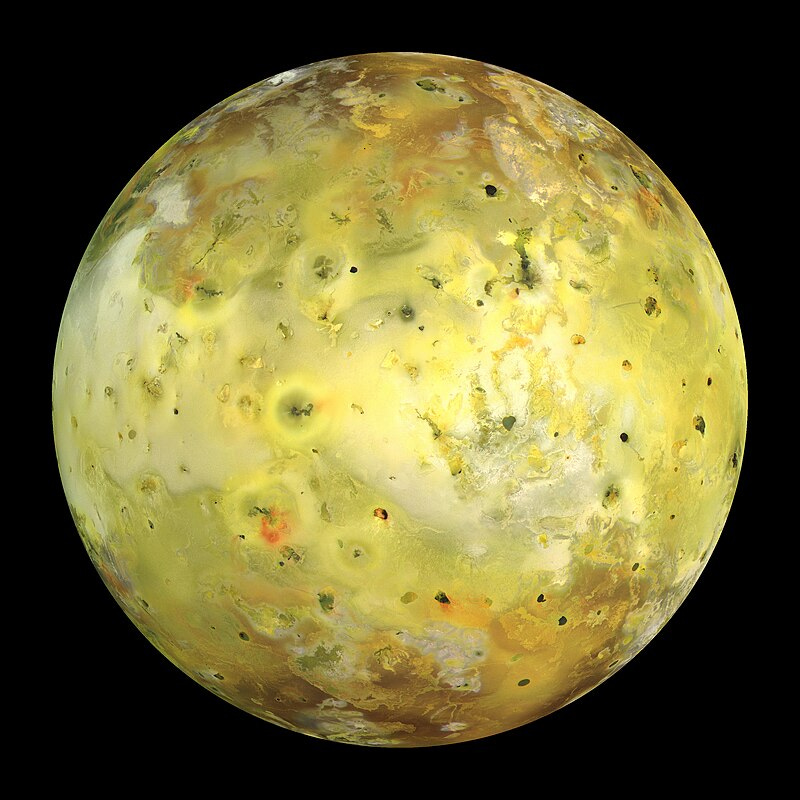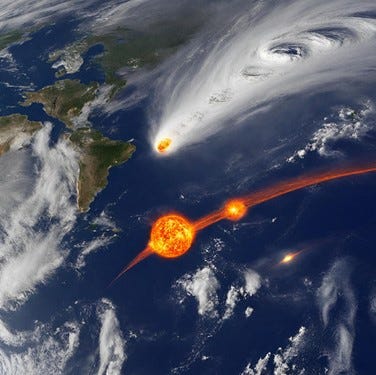For a planet to be Earth-like, we are looking in Goldilocks Zones for planets, so they are neither too hot, nor too cold for liquid water to exist [1] since we believe that is a prerequisite for life as we know it. (but we may be wrong)
Suppose we find a promising candidate planet where life could exist but doesn’t yet. What’s next? If our goal is not simply to investigate planetary evolution but rather to begin terraforming, I have some ideas.
First, we would send a probe capable of making measurements, conducting experiments, landing organisms to change the planet’s conditions, and building an ecosystem. I’m making an assumption here that any such starship would have to travel a long time, so any life that it brings with it would have to be frozen in liquid Nitrogen (LN2) storage, so you don’t have to bring enough food for living organisms for decades of travel. This saves food, fuel, oxygen, weight, travel time, etc. You could boost at high gee forces, for example. And you could use very dangerous drives, such as an Orion drive. [2] This type of nuclear drive could boost to very high speeds, compared to chemical drives, and we know how to do it with today’s technology. For interstellar distances, this is critical.
Let’s assume that you have solved the issues of space drives that can actually reach another star, and you arrive there with a ship in orbit around a decent planet in a Goldilocks Zone. What would that ship need to look like?
If a planet is too cold, like Mars, one might speculate about mounting rocket motors to some asteroids or comets and crashing them into Mars. This would supply some heat, and possibly water. It could supply Carbon as well, if we assume the local asteroids and comets are like the ones in our solar system. So our theoretical ship might need to have some ability to attach small impulse rocket drives or Orion drives to some asteroids or comets. It might be best to plan this, as you enter the system, and still have some speed, and ability to change direction or launch probes in other directions.
Bombardment of a planet could heat things up a lot. And only small engines, mounted on asteroids, would be required if you were not in a hurry.
If the planet was a bit hot, (like Venus) you could cool things down by using some extra Orion bombs on its surface. Think Nuclear Winter. You should measure the spectrum of such blasts also, since that would yield some information about metallic poisons that could make or break the use of the planet.
If there isn’t any oxygen, you may want to seed it with microbes that eat whatever is there, (probably CO2 or Methane) and produce oxygen. We have such Chemotrophs on Earth around volcanic vents or geysers. They can ‘eat’ arsenic, sulfur, and a variety of chemicals. But you would hope to use Solar energy via photosynthesis since that is a more reliable source of energy. That O2 in CO2 is oxygen, so if you find a planet with lots of CO2, then your candidate planet is looking pretty good. Alternatively, you could try to recapitulate the process as we believe that it happened on early Earth, and get an anaerobic ecosystem going first, and then transition to aerobic.
So in the Goldilocks Zone, we might assume some sunlight, vulcanism, radioactive elements, or other heat, and that can be used for photosynthetic energy. But we need to look at the spectrum of light energy, and pick a microbe that has good photosynthesis in those wavelengths. Same for higher plants. Also, the amount of ultraviolet matters, because that determines how much shielding is needed. In higher animals that is chemicals like melanin. In plants that could be layers of bark or dead cells. Or perhaps a faster turnover of leaves due to the fast damage rate. Microbes would struggle with UV, and might need to live inside plants, and animals, or under the terrestrial or ocean surface for more protection.
Chemolithotrophs don’t need sunlight of course. They use chemicals for electron donors. But I believe that you would end up with a pretty lousy ecosystem, if you don’t have a good source of energy from a sun. Chemolithotrophs need chemical sources of energy, and that may be a pretty small amount of energy.
You could also imagine life working to some degree in lava tubes on planets like IO, using heat energy, chemical energy, and getting some small non-photosynthetic ecosystem going. But to me, that seems like a lot of work, for very little gain. And the next eruption could wipe it out readily.
So, I would suggest specialization: Choose planets that may have good energy in the form of sunlight. Choose planets with signs of CO2, or early Earth-like chemistry and temperature. Stock the ship with modified Earth organisms for a photosynthetic ecosystem and build it up from small fungi, Archaea,[3] bacteria, and algae, to larger lifeforms (plants, phytoplankton), and finally to those that need to eat the first ones (animals).
When conditions are prepared, the starship, could then choose appropriate lifeforms from its frozen Liquid Nitrogen storage, mix up a batch with nutrients, load up a lander probe, and fire it to the surface. The probe should have measuring devices so it can monitor things a bit at intervals, and phone home with results. The orbiting starship can send results of these experiments home.
A crazy alternate idea is to ignore Goldilocks Zones, and find something like IO that is geologically active. Io is pulled by tidal forces of Jupiter and this generates a lot of heat, which results in volcanism, which results in lot so empty lava tubes. You could fill these with air and you would have a preformed habitat, which could block Jupiter’s radiation, and support oxygen using lifeforms. It has heat, energy, minerals, radiation shielding, and likely water in some of those minerals (from which you could make Oxygen). So it has many of the factors needed to support life. Of course, you would have to watch out for new vulcanism. But like I said before, unless you’re a prospector, this really sounds like a plan B.
Summary.
Find a likely star. Send a probe that has a robot nanny, a bank of frozen microbes, a zygote bank for higher organisms, food for all of the above, landers, and mountable motors for asteroids.
Caveats and Second Thoughts.
If there is intelligent life out there, and we go terraforming their planet, I wonder if that might be thought of, as an act of war? Or bioterrorism? So it may make sense to monitor a little first and just report back, if there are any signs of that.





